|
Winning the Nobel Prize is a crowning achievement for any scientist. It is recognition that said scientist has had a real world impact and made a major contribution to the advancement of knowledge. Nevertheless, there are some drawbacks to winning the Nobel Prize. Upon reading this, some scientists would reply, “Oh, yeah? Just try me!” I know. I know. Most scientists would rather have a Nobel Prize than not. But one of the problems with a Nobel Prize is the perception that it represents the peak in a scientist’s career, and that from there on it’s mostly a downhill ride. Now, don’t get me wrong. Most scientists remain active in research and make many important contributions after winning a Nobel Prize. But the majority of scientists remain active in the field in which they won the prize, as opposed to switching to a different field and making a new discovery. Therefore their work after winning the prize is often perceived to be the fill-in work by individuals engaged in an activity characterized by diminishing returns. It is difficult to shake off the notion that, if you’ve won a Nobel Prize, you are a “has been” whose future work will never reach the level achieved by your earlier work. However, what if you won a second Nobel Prize? Now, that would be something, wouldn’t it? It would very clearly convey the message that you’ve still have “IT”. So has anybody achieved this feat? In the 119 years during which the Nobel Prizes have been awarded, only four individuals have achieved this.  Marie Curie Marie Curie Marie Curie Marie Curie was a Polish-French physicist and chemist who, along with her husband, Pierre Curie, performed important work in the emerging field of radioactivity. For this work they shared the Physics Nobel Prize in 1903 with another pioneer in radiation studies, Henry Becquerel. Interestingly, and reflecting the prejudice of the times, the French Academy of Sciences was considering only nominating her husband and Becquerel for the award, but Pierre Curie complained that her contribution was also important, and they were both nominated and won. Marie Curie won a second Nobel Prize, this time in chemistry, in 1911 for her work in discovering the new elements Radium and Polonium (her husband had died in an accident in 1906). She is so far the only woman to have earned two Nobel prizes, and only one of two persons who has earned the prize in separate disciplines. It should be mentioned here that Marie’s daughter, Irene Joliot-Curie, along with her husband Frederick won the Nobel Prize in 1935 in chemistry for their synthesis of new radioactive elements. This makes the Curies the winningest family when it comes to Nobel Prizes, with a total of five! 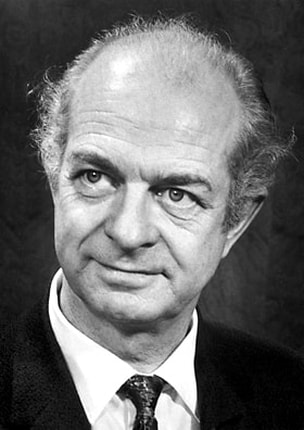 Linus Pauling Linus Pauling Linus Pauling Linus Pauling was an American chemist and biochemist who performed important work in the structure of biological molecules and the nature of the chemical bond. For his work he was awarded the Nobel Prize in chemistry in 1954. Pauling remained active in this area, but his concerns regarding the proliferation of atomic weapons led him to spearhead a movement to reduce the number of atomic weapons and ban their testing. For his activism, Pauling was awarded the Nobel Prize in Peace in 1963. Pauling was the second person (after Marie Curie) to win two Nobel Prizes in different disciplines, but in his case he was the sole winner. He did not share his prizes with anyone! 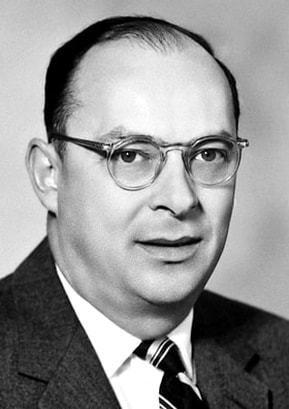 John Bardeen John Bardeen John Bardeen John Bardeen was an electrical engineer and physicist who with Walter Brattain invented the transistor while working at Bell Labs in 1947. This invention caused a revolution in the field of electronics and made possible most modern electrical devices that we use today. For their work, Bardeen and Brattain were honored with the Nobel Prize in physics in 1956, which they shared with William Shockley. However, after Bardeen left the emerging transistor field, he developed, along with Leon Cooper and John Schrieffer, a theory to explain the phenomenon of superconductivity (commonly called the BCS theory), for which all three were awarded the Nobel Prize in 1972. In this way, Bardeen became the first individual to receive the Nobel Prize for work carried out in two fields of research within the same discipline! 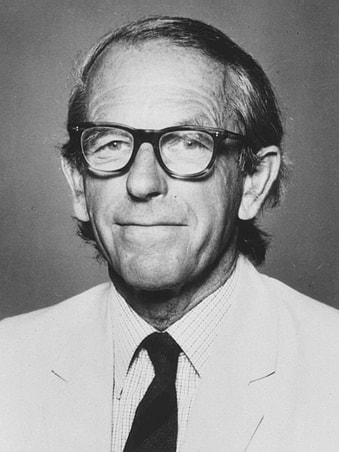 Frederick Sanger Frederick Sanger Frederick Sanger The British biochemist, Frederick Sanger, was the first person to sequence and determine the structure of the very important protein hormone, insulin. This achievement not only revolutionized the study of proteins but also paved the way for the production of synthetic insulin. For this achievement he received the Nobel Prize in chemistry in 1958. Sanger then, focused his energies on DNA, the molecule that carries the instructions to produce living things. He devised methods to determine the long sequences of this molecule, and this achievement led to the determination of sequences of DNA and related molecules from many organisms including humans, as well as to the identification of the DNA changes underlying genetic diseases. Sanger’s methodological contributions also served to launch the modern disciplines of molecular biology and biotechnology. For these achievements, Sanger received again the Nobel Prize in chemistry in 1980, which he shared with Paul Berg, and Walter Gilbert, thus becoming the second person ever to have received two Nobel Prizes in the same discipline. No one has won two Nobel Prizes since Sanger in 1980, and no one has won them in the discipline of physiology and medicine. Similarly, no one has won three Nobel Prizes (and some people would argue that the human lifespan and the dynamics of Nobel Prize worthy achievements are such that this is impossible). So far, Marie Curie, Linus Pauling, John Bardeen, and Frederick Sanger represent or are very close to the peak performance attainable by the human mind in the field of science. After winning their first Nobel Prize, these people proved to the world that they still had “IT”! The 1911 photograph of Marie Curie published in 1912 in Sweden (Generalstabens Litografiska Anstalt Stockholm) is in the public domain. The 1962 photo of Linus Pauling and the 1955 photo of John Bardeen by the Nobel foundation are in the public domain. The NIH photo of Frederick Sanger is in the public domain.
0 Comments
 There is a joke that illustrates misguided science thinking. A man is in a public area screaming at the top of his lungs. When somebody comes over and enquires why he is screaming, the man replies, “To keep away rogue elephants”. When told that there are no elephants for miles around, the man replies that this is proof his screaming is working. If you think that is silly, consider the following recipe for obtaining mice by spontaneous generation (in other words, without the need for male and female mice): Place a soiled shirt into the opening of a vessel containing grains of wheat. Within 21 days the reaction of the leaven in the shirt with the fumes from the wheat will produce mice. No, I’m not kidding you! For many centuries some of the best minds in humanity believed that life could regularly arise spontaneously from nonlife or at least from unrelated organisms. Some people went as far as outlining procedures to achieve this, such as the one presented above to generate mice supplied by the chemist Jean Baptiste van Helmont. Presumably, this individual (who is no stranger to misguided scientific thinking) placed a shirt in a vessel with grains of wheat, and when he checked 21 days later he saw a mouse scurrying away. Therefore, he concluded that the mix of the wheat and the shirt in the vessel produced the mouse. What the above examples of misguided science have in common is the ignoring of alternative explanations. In the case of the joke, the alternative explanation obviously is that there are no rogue elephants nearby to begin with. In the other case, the alternative explanation is that the mouse came from elsewhere, as opposed to arising from the shirt with the wheat. The best scientific experiment is one carried out in such a manner that alternative explanations for the experimental results are minimized or ruled out altogether. The ideal scientific experiment should only have one possible explanation for the outcome. In order to achieve this, scientists use controls. A control is an element of the experimental design that allows for the control of variables that could otherwise affect the outcome of the experiment. In the case of the joke, the man could stop screaming to see if rogue elephants show up, or he could scream next to an actual elephant to see if screaming works. In the case of the real example, van Helmont could have placed a barrier around the shirt with the wheat to rule out that mice came from the outside. The use of controls in experiments is so commonplace nowadays, that it is really hard to imagine how anyone could even think of performing an experiment without them. However, the modern universal notion of controls as a way of controlling variables to rule out alternative explanations to experimental results did not begin to take shape until the second half of the 19th century, even though scholars claim that strategies to make observations or experiments yield valid results go back further in time to the Middle Ages or even antiquity. In science, the controls that are most often used are those involving outside variables that can affect the results of an experiment. However, the more important and more challenging variables to control are those that arise from within the experimenter. 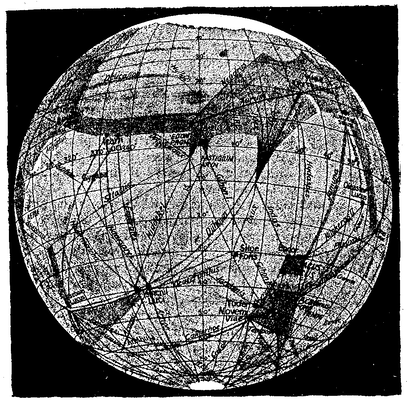 Illustration of the Canals on Mars by Percival Lowell Illustration of the Canals on Mars by Percival Lowell If the procedure to make an observation or evaluate the results of an experiment depends on a subjective judgement made by the experimenter, as opposed to, for example, a reading made by a machine, then subtle (and not so subtle) psychological factors can influence the result depending on the biases of the experimenter. I have already mentioned the famous case of the scientist René Blondlot who in 1903 announced to the world he had discovered a new form of radiation (N-rays), but it turned out that such radiation existed only in his imagination. Another famous case was that of astronomer Percival Lowell who, at the turn of the 19th century, thought he saw canals on Mars which he considered to be evidence of an advanced civilization. He was a great popularizer of science and he wrote several books about Mars and its inhabitants based on his observations, but the whole thing turned out to be a delusion. To avoid this type of mistake, many experiments that rely on subjective assessments employ a protocol where the observer does not know which groups received which treatments. This is called a blind experimental design.
An additional challenge occurs when a scientists works with human subjects. Psychological factors can have a potent role in influencing the results of medical experiments. Depending on the disease, if patients are convinced that they are receiving an effective treatment, and that their condition will improve, said patients can display remarkable improvements in their health even if they have received no effective treatment at all. To rule out the effect of these psychological factors, scientist performing clinical trials include groups of patients treated with placebos. Placebos are fake pills designed to mimic the actual pill containing the active chemical substance or ineffective procedures designed to mimic the actual medical procedure in such way that the patient cannot tell the difference. To also rule out the influence of psychological factors arising from the doctors giving patients in one group a special treatment, the identity of these groups are hidden from the clinicians. Clinical trials which employ placebos and where both the patients and the clinicians don’t know the identity of the treatments, are called double-blind placebo-controlled trials, and they are the most effective and also the most complex forms of controls. Unfortunately, the use of controls is not always straightforward. I have already mentioned the case of the discovery of polywater which was heralded as a new form of water with intriguing properties that promised many interesting practical applications until someone implemented a control and demonstrated that it was the result of contamination. Sometimes scientists do not know all the variables affecting an experiment, or they may underestimate the effect of a variable that they have deemed irrelevant, or they may misjudge the extent to which their emotional involvement in conducting the experiment may compromise the results. Designing the adequate controls into experimental protocols requires not only discipline, discernment, and smarts, but sometimes also just luck. In fact, some scientists would argue that implementing effective controls is not a science but an art. The art of the control! The Elephant cartoon from PixaBay is free for commercial use. The Illustration of Mars and its canals by Percival Lowell is in the public domain. I once attended a science meeting where one of the attendees was proposing the existence of a new metabolic pathway that was not recognized by the prevailing thinking in the field. After he presented the evidence for his pathway, in the next talk one of the other researchers presented the evidence against the existence of such a pathway. This second researcher then concluded his presentation by raising his voice and stating that he considered the proposed new pathway to be: “COMPLETELY IGNORABLE!” while he slammed his hand flat on the lectern once during the word “completely” and again during the word “ignorable”. The above story is not an isolated incident. Many fields of science have had their share of controversy often accompanied by vitriolic long-running feuds among rival scientists that seemingly resorted to using science, not as a method to discover the truth, but rather as a platform to hurl insults. And the situations that stir the most passions arise when conventional wisdom is challenged: the more revolutionary the idea, the more the attacks rain upon its proponents. There are quite a few examples of these occurrences in the history of science, but I want to mention three here. I have already cited the case of the American neurologist and biochemist Stanley Prusiner who in 1982 proposed the existence of an infectious agent made exclusively of proteins (no DNA or RNA), which he christened Prion. He was vilified in public and private by other scientists, but persevered and eventually won the Nobel Prize in 1997. 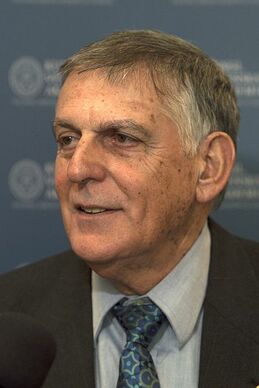 Dan Shechtman Dan Shechtman Another case is the one of the Israeli scientist Dan Shechtman who discovered a new type of crystal that did not conform to common rules that crystals followed according to the field of crystallography. When he published his findings about these “quasicrystals”, the negative reaction to his discovery was so strong that the leader of his research group asked him to leave the team for bringing disgrace to it. Shechtman was ridiculed and lectured about the basics of crystallography by other scientists, and the famous two-time Nobel Prize winning scientist Linus Pauling famously stated that “there are no quasi-crystals, but quasi-scientists”. Shechtman eventually prevailed and was awarded the Nobel Prize in chemistry in 2011. 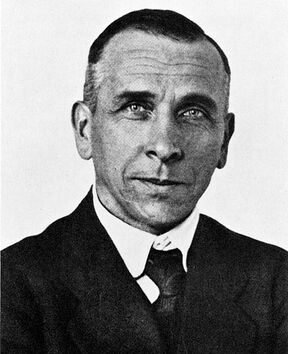 Alfred Wegener Alfred Wegener Finally, there was the German meteorologist and geophysicist Alfred Wegener, who proposed in the early twentieth century that the position of continents is not fixed, but rather that they move slowly over geological periods of time (continental drift). He was called “delirious” and a “stranger to the facts”. His theory was labelled “pseudoscience” and a “fairy tale”. New students in geology were advised by their mentors that acceptance of continental drift would hurt their careers. Through it all, Wegener kept refining his theory and answering his critics. Eventually, after several decades during which new discoveries were made regarding the spreading of the sea floor and new disciplines such as paleomagnetism demonstrated the drift of continents, his ideas were accepted and incorporated into the new theory of plate tectonics. Unfortunately, Wegener did not live to see this. He died during an expedition to Greenland in 1930. Why should scientists be so hypercritical? Isn’t science about proposing hypotheses and testing them through observation and experiment? Why should proposing a hypothesis, no matter how far-fetched, be met with virulent skepticism, humiliation, and insults? This has, of course, nothing to do with the scientific method. The reasons for this must reside in human nature. To my knowledge, the exact explanation has not been pinpointed, but I believe there are two phases to this phenomenon. The first phase is the short-term response of a scientist upon being confronted with an idea that upends his or her world view. During this phase it may be understandable that an individual will engage in a “knee-jerk” reaction and latch on to any imperfections in the idea in order to criticize it and its proponent. The second phase is what happens over a longer time frame of weeks, months, or even years after the idea has been proposed. This phase is the more interesting one because the short-term emotions have quieted down and scientists make calculated decisions as to what to do about the idea. The forces governing this second phase have been equated with the perception of how young and old individuals react to change. It is argued that old scientists are more comfortable with established knowledge, especially if they played a role in generating this knowledge. These older individuals may view any proposal which threatens to upend the conventional wisdom with suspicion and skepticism, to the point of using their influence to block funding to perform research into the new idea, impede the publication of research regarding the idea in mainstream journals, or even hinder the academic careers of the proponents. On the other hand, young scientists who are beginning their careers may be more receptive to new ideas and more welcoming to the individuals who propose them. 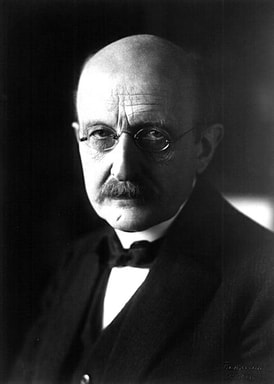 Max Planck Max Planck The physicist Max Planck once famously remarked that; “A new scientific truth does not triumph by convincing its opponents and making them see the light, but rather because its opponents eventually die, and a new generation grows up that is familiar with it.” This notion that scientific progress ultimately depends on the replacement of a new generation of scientists by another, is often humorously phrased as “science advances one funeral at a time”. While there may be some truth to this, I believe this generational replacement notion is not the whole story, and may in fact just reflect the difficulty in carrying out confirmatory experiments or observations. The thing at the heart of scientific progress is the ability to replicate experimental results or observations, or test an idea. If replicating a controversial experiment or observation, or testing an idea, is something that can be accomplished by one lab in a short time within current budgets, acceptance of a new idea may occur relatively quickly. This happened in the case of Shechtman, and also, although more slowly, in the case of Prusiner. Other scientists, both young and old, tried to replicate the experiments of Shechtman and Prusiner and indeed obtained the same results. On the other hand, if replicating experimental results or observations, or testing an idea, requires expensive studies that take many years and involve coordination between several laboratories and travelling around the globe, or the development of new experimental tools or even new scientific disciplines, the process may be much slower, especially after you factor in the resolution of any technical problems that may arise. This happened in Wegener’s case During these longer time frames, you may have a significant dying out of old scientists and their replacement with a younger generation. If the new ideas are finally accepted, the long time frame that it took for this to happen may give rise to the notion that the idea was accepted only because the old scientists died, which may not the case. Be that as it may, the scientific establishment clearly sets a very high bar for new ideas to be accepted. Proposing an idea that runs contrary to the established order is not for the faint of heart. But it may just happen that if you can put up with the insults, in the end you may persevere after enough funerals! Photograph of Dan Shechtman by Holger Motzkau used here under an Attribution-ShareAlike 3.0 Unported (CC BY-SA 3.0) license. The Wegener photo from the Bildarchiv Foto Marburg and the Max Planck photo by Transocean (Photographic company, Berlin) are in the public domain. 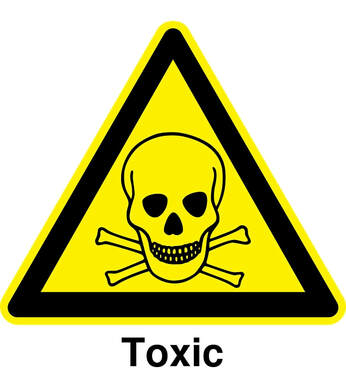 In the United States, there is now a growing movement to ban the dangerous chemical “dihydrogen monoxide”. What is this chemical? Dihydrogen monoxide is widely used in industry for processing, washing, diluting, cooling, or transporting a variety of products. Specifically, it is used by smelting facilities, petroleum refineries, and industries producing metal, chemical, and paper products, but most alarmingly, it is also widely used by the food industry. So what is the problem with this chemical? The problem is that it can kill people!  Sodium Salt of Thimerosal Sodium Salt of Thimerosal Accidental inhalation of dihydrogen monoxide kills several thousand Americans every year and over 2 million people worldwide. Oral ingestion of dihydrogen monoxide can result in dihydrogen monoxide intoxication which is characterized by headaches, confusion and disorientation, and nausea and vomiting. If left untreated, dihydrogen monoxide intoxication may lead to muscle weakness, spasms or cramps, and can cause seizures and loss of consciousness. Exposure to the solid form of dihydrogen monoxide can cause serious tissue damage. Pure dihydrogen monoxide injected intravenously to laboratory rats or mice will kill them. Despite the above, get ready for this, there is no urgency whatsoever in the government to ban this chemical. It is dumped legally (!) as a waste product by multiple industries into our rivers and lakes, and even into the ocean. Dihydrogen monoxide in the environment contributes to global warming, and to the erosion of the landscape. It causes corrosion of metals, electrical failures, and millions of dollars in property damage each year. The acid form of dihydrogen monoxide (hydroxyl acid) is a component of acid rain which destroys our forests. The presence of dihydrogen monoxide can be detected in wildlife and in our own bodies! Enough is enough! The time has come to ban the use of dihydrogen monoxide for good. Will you join our group of concerned citizens, donate to our cause, and help us pressure our government to vanish the use this dangerous chemical? Let me answer that question for you. The answer is: NO. Why? Because dihydrogen monoxide is one of the chemical names of “water”. What I wrote in this post about dihydrogen monoxide is just my version of a recurrent hoax /joke that has been going around for decades, and is meant to illustrate how the lack of scientific literacy, and the phrasing of alarmist claims, can affect public opinion. In the most extreme forms of this hoax, people are requested to sign a petition to ban dihydrogen monoxide, which often leads to the collection of many of signatures. Choosing the right words, and saying things about any chemical in the right way, can make it look scary, and in this case, I didn’t even have to lie. Everything I wrote is true. For example, accidental inhalation of water can kill people (it’s called drowning), excessive ingestion of water can be hazardous (it’s called over hydration; there is a method of torture based on this), formation of water crystals (ice: solid form of water) inside the cells of your tissues can damage them (frostbite), and injection of the right amount of pure water into animals can wreak havoc on the body’s electrolyte balance and kill them. In today’s vast scientific literature, where virtually every chemical has been tested in one way or another, it is very difficult not to find examples of a chemical having a deleterious effect on some parameter of some biological model. And with today’s unparalleled access to information, people who believe they know more than the experts can set out on a crusade against any chemical. All they have to do is pick and choose studies from the scientific literature, without any regard for their quality or relevance, and weave them into a narrative using innuendo and questionable association to other compounds, which will cast the chemical in the worst possible light. This approach combined with the right mix of emotions, exploitation of human suffering, and politics can prove very effective, and is not unlike selling snake oil. A famous case of the above strategy is when those opposed to vaccination waged a campaign against the chemical thimerosal which was alleged to cause autism. Thimerosal is a chemical that was used in many vaccines to prevent the growth of germs. Once inside the body, thimerosal is degraded to a derivative of mercury called ethylmercury. Mercury by itself or in the form of methylmercury is toxic, but ethylmercury is not toxic at the levels delivered by vaccines and is cleared from the body faster than methylmercury. In many cases, the anti-vaccine popular literature engaged in the innuendo that because mercury is toxic and thimerosal contains mercury, then thimerosal must be toxic. However, the toxicity of an element like mercury is heavily dependent on the way it is combined with other elements in chemical compounds. For example, the explosive elemental sodium (Na) and the extremely toxic chlorine (Cl), when combined with each other form the innocuous NaCl which is table salt. The pressure to ban thimerosal kept mounting, and the US Public Health Service decided to request that vaccine companies remove thimerosal from most childhood vaccines in 1999 as a precautionary measure to decrease overall exposure in infants to mercury derivatives. However, the best designed studies did not find any conclusive association between thimerosal (or vaccines for that matter) and autism. After thimerosal was removed from most childhood vaccines, the number of cases of autism has kept on increasing, indicating that thimerosal in vaccines was not responsible for this trend. However, none of this has been accepted by the anti-vaccine community, which is busy at work convincing more and more parents not to vaccinate their children and peddling conspiracy theories. Not unexpectedly, the number of measles cases in the United States has reached an all-time high since it was seemingly eliminated in 2000. This is not to say that there aren’t legitimate cases where the public should be concerned about the use of certain chemicals in medicine and industry, or instances where politics or other influences have vitiated the established procedures to determine safety. But the answer is not to stoke people’s fears, enshrine faulty science as truth, and disavow the assessment of experts on complex scientific issues claiming they have “sold out” if they do not support alarmist theories. The dihydrogen monoxide hoax is a joke, but what happened to thimerosal isn’t. Our life is better today thanks to thousands of medicines and chemicals produced by our pharmaceutical companies and industries. If we are concerned about the safety of these products, we should work with our scientific and medical organizations, not against them. Human nature is flawed. There will always be individuals who will engage in deceit, but the vast majority of scientists are principled people who will accept the evidence when it is clear and reproducible. The image from Pixabay is licensed for public use. The image of thimerosal by vaccinationist was taken from PubChem and is in the public domain. |
Details
Categories
All
Archives
June 2024
|
 RSS Feed
RSS Feed